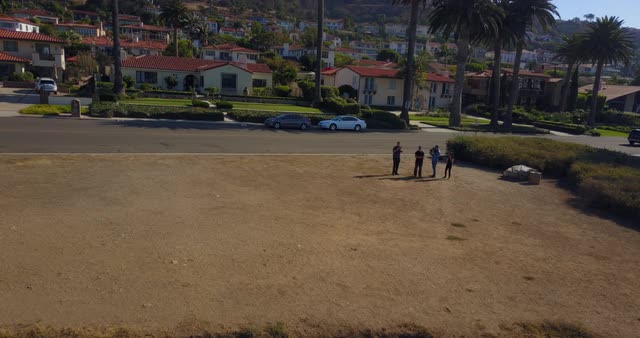DJI's response to GoPro drone is smaller, easier

PALOS VERDES ESTATES, Calif. — Get ready for the battle of the smaller, higher quality consumer drones.
In one corner, action cam manufacturer GoPro, which last week unveiled its first drone, the $800 foldable Karma. On Tuesday, No. 1 drone manufacturer DJI responded by unveiling Mavic Pro. Like the Karma, the Mavic is small and totable, with a full-featured 4K camera and software for easy flying. The camera will sell for $999 and be available in mid-October.
Earlier this month, rival Yuneec also released a smaller, easier-to-fly, but more bare bones $599 Breeze. To compete, DJI, which has a 70% market share in drone sales, is offering more of the full-featured features seen in DJI's Phantom series, but in a smaller, less expensive package.
Drones, and the ability to photograph the world from a different, overhead perspective, have emerged as one of the most popular consumer tech gifts. The Federal Aviation Administration says 1 million drones were sold in 2015's holiday season, and more are expected this year. New rules kicked in from the FAA recently requiring consumers to register their units, and in some cases, get licensed by the FAA to commercial (real estate, wedding photographers) use.
At the same time, many companies, like Amazon and Google are looking to drones as a new form of delivery.
We recently accompanied DJI's director of education Romeo Durscher for a test flight here on this classic California seaside bluff. He did most of the flying, and also demonstrated how to launch and land the unit.
The takeoff and landings are touted as virtually automatic, and after the quick tutorial, the drone really did respond accordingly. But most impressive was the footage, which included smooth, sharp and awe-inspiring video of the Mavic soaring off the cliffs. Another high-point — the ability to select a person on the screen for the drone to follow. Look for the shot in the video of me trying to ditch the Mavic.
DJI says the Mavic is its first "personal" drone, small enough ("the size of a water bottle) to "toss in a bag" with easier than before flying, via a controller and a smartphone app, which can stream live video to Facebook and the Periscope app.

GoPro's Karma will sell without an attached GoPro camera, which can cost an extra $400, but also comes with an attached grip to use the mechanical stabilizer on land for similar drone-like footage on the ground. DJI also sells a popular land grip set-up, the Osmo, for $549 with a built-in 4K camera, or $299 for the Osmo Mobile, which connects to your smartphone camera.
On paper, the Karma sounds like the better deal. We know how cool GoPro cameras look, and the biggest negative to them has been shaky footage. Now, with the stabilizer of the drone, that problem has been addressed, plus you get the land grip for free.
But DJI has one huge selling point: this company knows drones. That's what they do and GoPro is new to the form. And, if you're willing to buy the Mavic without the controller, it will sell it for $749, $50 less than the Karma. (You can operate it via the smartphone app.)
Of the new competition, Romeo Durscher, DJI's director of education, says he's "excited," about having another drone manufacturer join the party. Competitively, he says the Mavic is smaller than the Karma, more powerful and has better software. "We have forward-facing sensors that can detect objects, and can make a quick decision to avoid an oncoming object," he says. "It makes the operation easier and safer."
Follow Paste BN's Jefferson Graham on Twitter, @jeffersongraham and listen to the daily #TalkingTech podcast on Stitcher and iTunes.